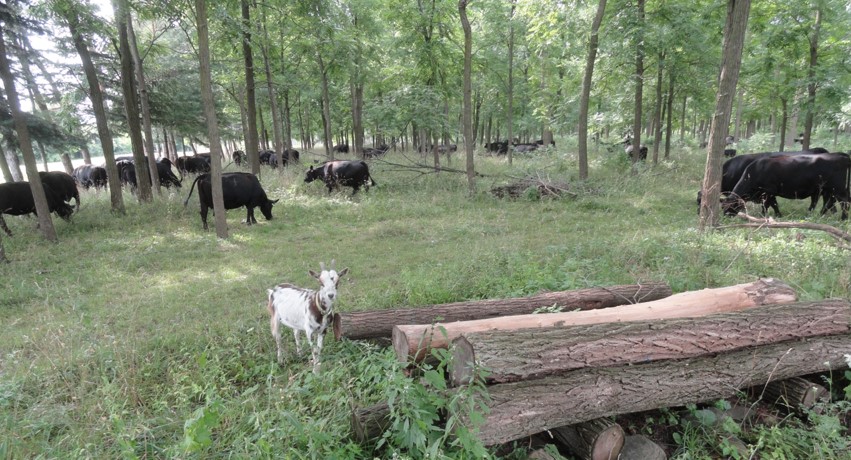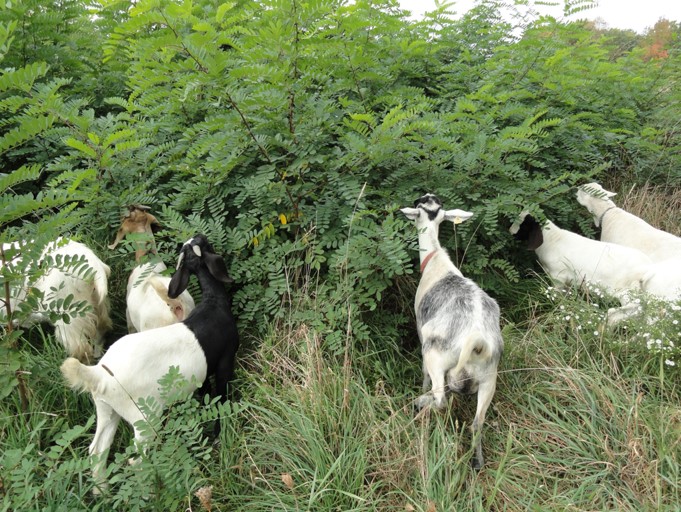In 1988, with a year of forestry school under my belt, I set about my goal of turning the 100 acres of fields on our family’s old dairy farm in upstate New York into forests. To my parents’ relief, I ran out of time to fully carry out the threat before heading off into the big world. However, several productive springs throughout college were enough to get trees started on 30 acres of the farm’s less productive fields.
On the better sites, we planted a mix of black locust and black walnut. My fledgling knowledge of forest economics showed it to be a great “get rich quick” scheme, which in forestry terms means in about 50 years. In hindsight, the brilliant part of that plan were the locusts. Sure, the walnuts are still there and someday we will reap what we have sown, but the locusts have been a blessing in multiple ways.
When establishing these plantations thirty-some years ago, the long-term vision was to become tree farmers - no more dairy, no more crops, no more livestock – just trees. I didn’t know much about black locust back then (even though I thought I knew everything at the time), but it seemed like a good companion tree for the walnuts. Plus, the seedlings were readily available and cheap.
Although the locusts were not the main tree crop, we couldn’t have picked a better species for what we do today on our 500-acre grazing farm. The locust plantations have become some of our best silvopasture areas while saving us many thousands in fencing costs. Below are just a few of the qualities that I’ve come to appreciate about this remarkable tree:
- This member of the legume family fixes significant amounts of atmospheric nitrogen, creating “free fertilizer” for our pastures.
- The highly decay-resistant wood is the perfect home-grown source of durable fence posts (Figure 1).
- Due to a lack of shade tolerance, locust readily self-prunes in silvopasture settings. The porous canopy allows ample amount of sunlight through for growing forages. The characteristically late leaf-out also favors the cool season species that thrive in the lightly-shaded understories.
- The fast growth and thorny qualities of young locust enable it to overcome grazing pressure in well-rested rotational grazing systems.
- Locust flowers provide nectar and pollen for bees, and the foliage can be very palatable and nutritious for livestock. However, it should be noted that locust foliage can have toxic levels of condensed tannins. If animals are not accustomed to locust browse, they should be gradually acclimated and monitored (Figure 2)
 Figure 1. Quality locust posts can be grown in under 20 years and expected to last at least 30 in the fence line if care is taken in the selection.
Figure 1. Quality locust posts can be grown in under 20 years and expected to last at least 30 in the fence line if care is taken in the selection.
 Figure 2. Locust browse is nutritious and relished by most livestock, but caution should be used to acclimate novel animals to the condensed tannins.
Figure 2. Locust browse is nutritious and relished by most livestock, but caution should be used to acclimate novel animals to the condensed tannins.
Two past mistakes to learn from are starting with straighter growth genetics and keeping locust away from places where you don’t want it, because locust will gradually spread through root suckering into any open space with sufficient sunlight (Figure 3). However, this trait is also desirable in some cases when you want locust to spread into adjacent pastures for cheap and easy new silvopastures.
 Figure 3. Boon or bane? Locust’s ability to spread in to surrounding areas through root suckering can be used to the agroforester’s advantage if planted in the right spots. These locust sprouts outgrew rotational grazing pressure in just a couple of growing seasons and are starting to form a new silvopastures.
Figure 3. Boon or bane? Locust’s ability to spread in to surrounding areas through root suckering can be used to the agroforester’s advantage if planted in the right spots. These locust sprouts outgrew rotational grazing pressure in just a couple of growing seasons and are starting to form a new silvopastures.
There are a few issues with black locust that can be addressed through genetic research. Crooked trucks are a predominance in black locust. The are three recognized growth forms for black locust are pinnate, palmate, and “spreading”. The pinnate (“pine-like”) form is characterized by a straight, single stem and would be the most desirable from a timber standpoint. A few breeding programs, mostly in Europe, are also selecting for increased resistance to common pests like the locust borer. Finding a source of improved black locust seedlings is still elusive, so grow-your-own efforts from local “superior” parent trees may be necessary (Figure 4). Expert recommendations for propagating locust from seed are posted on the www.silvopasture.ning.com forum.
 Figure 4. Superior seed sources are found throughout the naturalized range of black locust. The extra effort to use better planting material will pay good dividends down the road though higher yields of utilizable products such as posts, poles, and saw logs.
Figure 4. Superior seed sources are found throughout the naturalized range of black locust. The extra effort to use better planting material will pay good dividends down the road though higher yields of utilizable products such as posts, poles, and saw logs.
Another piece of the learning curve from the utilization side is to be more selective with posts. Yes, locust posts are durable. But they can also be quite defective. So, unless replacing failed fence posts seems like a fun pastime, the firewood pile should be larger than the post pile when thinning out the stand.
Although work remains to continue developing quality sources of planting material and reducing pest issues, I would be hard-pressed today to come up with a tree that has greater potential as a timber cash crop and for creating profitable silvopastures from scratch than black locust.
Brett Chedzoy is a forester with Cornell Cooperative Extension of Schuyler County, NY. He works regionally on forestry, agroforestry and grazing education. Brett and his family own and operate ranching operations in Watkins Glen, NY and Alpa Corral, Argentina that extensively utilize Black Locust as part of their silvopasture systems.



